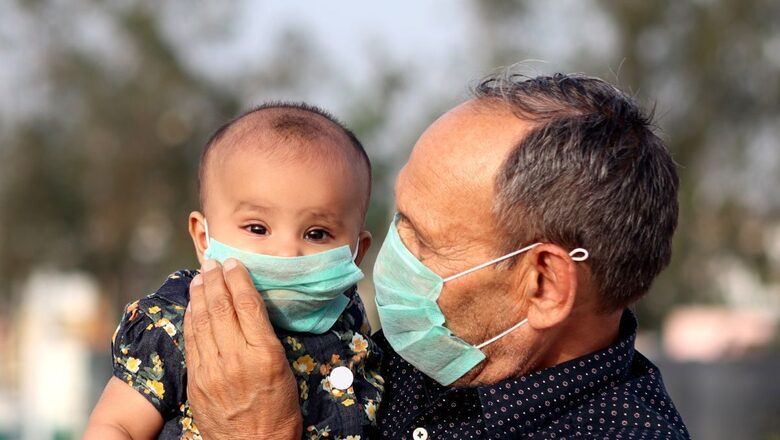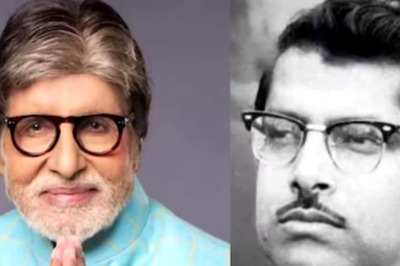
views
Emerging in August 2023, the JN.1 sub-variant has provided ample time for observation. A notable characteristic is its rapid transmission. Labelling it as a non-lethal virus might lead to complacency, but the reality is that the JN.1 sub-variant has now become the prevalent strain, constituting over 60 per cent of Covid-19 cases in India.
What tends to slip our minds is that even when the virus doesn’t result in fatalities, it can still lead to long-term effects, known as long Covid-19, which is broadly defined as signs, symptoms, and conditions that continue or develop after infection.
Long Covid-19 the Real Monster
During the second wave, my 59-year-old mother lost her sense of smell — also known as olfactory disorder — post a bout of moderate Covid-19. For over two years now, she has been grappling with a condition where her sense of smell has returned, albeit with increased sensitivity, making it difficult for her to tolerate the scent of numerous fruits, vegetables, and beverages, including coffee.
Fortunately, it remains a relatively minor side effect amid an otherwise perilous list of potential consequences. From cardiac diseases to muscle weakness, fatigue, brain fog, olfactory disorder, and pain in muscles, long Covid-19 is linked to more than 200 symptoms and the list is still evolving.
Sample this: In a latest study, scientists discovered that long Covid-19 is responsible for post-exercise malaise in individuals who weren’t hospitalised during the infection and had reasonably active lifestyles before. Published in the Nature Communications journal on January 4, a study conducted by Amsterdam University Medical Center revealed alterations in muscle structure and function among those with long-term Covid-19 in comparison to other healthy individuals.
Upon analysing biopsies taken before and after exercise, researchers observed an increased presence of white fibers in the muscles of individuals with long Covid-19 compared to those without the condition.
In another Brazilian study published in May 2023, scientists detected long Covid-19 in 29.6 per cent patients with mild disease… “Fatigue was the most frequent sequelae and occurred isolated or associated with other clinical manifestations…we also observed a vast impact of long COVID on the quality of life.”
More than 5,000 Americans have died from long Covid-19 since the start of the pandemic, according to new estimates from the Center for Disease Control and Prevention (CDC).
By now, we possess robust data from various sources worldwide, including leading domestic health institutions such as the All India Institute of Medical Sciences, New Delhi. Collectively, these studies provide varying estimates of the prevalence of long Covid-19, ranging from approximately 9 to 37 per cent among patients.
Dr Rajeev Jayadevan, co-chairman of the Indian Medical Association Covid-19 task force (national), explained to me that even with a conservative estimate of 5 per cent, the impact is substantial. It’s crucial to recognise that long Covid-19 encompasses a spectrum of conditions.
Fatigue is a prevalent manifestation, which is challenging to diagnose in clinical settings.
“Individuals who were once highly active may now experience exhaustion, with their heart rate reaching 150 beats per minute during activities that previously required only 72 bpm. Long Covid-19 often leads to silent suffering at home, particularly among women who may not seek medical attention,” Jayadevan told me.
In fact, long Covid-19 has been labelled as a ‘curse’ for low income nations or developing countries.
Poorly understood and recorded
The understanding of the condition’s prevalence is inadequate, and it is frequently overlooked by both healthcare professionals and the general public.
Long Covid-19 diagnoses may not be officially recorded, and the condition tends to be underestimated even in top-notch hospitals.
With symptoms ranging from anxiety and muscle pain to brain fog and fatigue, it’s crucial to acknowledge long Covid-19 as a significant issue. While a concrete solution may not be readily available, recognition can foster empathy from both society and healthcare professionals.
The virus will continue to make changes again and again. So far, there have been nine waves globally with differences between geographical regions and spaced about 6-10 months apart. This will continue but we need to have a realistic strategy rather than comparing it with a common cold and flu.
In essence, it is our responsibility to protect ourselves from contracting the infection, even if the variant seems mild or less severe.
















Comments
0 comment